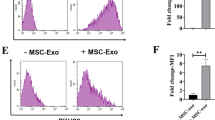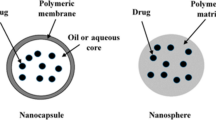Abstract
3D printing technologies leftovers the utmost sightings in tissue engineering as they can reiterate structural motifs present in natural materials by supplying the aptitude to adapt and respond to exterior stimuli, allowing the prospect of producing exceptional architecture with diverse complexity rates. Recently combining 3D structures with extracellular vesicles remains the safest method for cell-free therapy. Therapies based on the delivery of multiple growth factors or vesicles such as exosomes using 3D printed constructs offer a promising approach for optimal bone defect management. In this study, it is established that the 3D-printed constructs hold an excellent property and cytocompatibility. Likewise, the activation of bone regeneration and the mineralization process has been confirmed by Alizarin Red and alkaline phosphatase activity. It is evidenced that osteosarcoma cells-derived exosomes can control better the expression of the osteogenesis-related marker, especially in the living construct 3D-magnetic PLA (mag PLA). This was confirmed by the differentiation of human mesenchymal stem cells following the upregulation of RUNX2, COL1A1, OPN, and OSC. Thus, these results evinced that exosomes associated with magnetic particles may enhance growth-factor-free bone regeneration, in association with a boosted differentiation offering a novel regulatory system in the osteogenesis evolution. Thus, it is believed as one of the new strategies to improve biomaterial engraftment of great appeal in regenerative medicine.









Similar content being viewed by others
Data availability
The authors confirm that the data supporting the findings of this study are available within the article. Raw data that support the findings of this study are available from the corresponding author, upon reasonable request.
References
Rezwan K, Chen QZ, Blaker JJ et al (2006) Biodegradable and bioactive porous polymer/inorganic composite scaffolds for bone tissue engineering. Biomaterials 27:3413–3431. https://doi.org/10.1016/j.biomaterials.2006.01.039
Marew T, Birhanu G (2021) Three dimensional printed nanostructure biomaterials for bone tissue engineering. Regen Ther 18:102–111. https://doi.org/10.1016/j.reth.2021.05.001
Agarwal T, Hann SY, Chiesa I et al (2021) 4D printing in biomedical applications: emerging trends and technologies. J Mater Chem B 9:7608–7632. https://doi.org/10.1039/d1tb01335a
Tan B, Zhao N, Guo W et al (2023) Biomimetic hydroxyapatite coating on the 3D-printed bioactive porous composite ceramic scaffolds promoted osteogenic differentiation via PI3K/AKT/mTOR signaling pathways and facilitated bone regeneration in vivo. J Material Sci Tech 136:54–64. https://doi.org/10.1016/j.jmst.2022.07.016
Lopes MS, Jardini AL, Filho RM (2012) Poly (lactic acid) production for tissue engineering applications. Procedia Engin 42:1402–1413. https://doi.org/10.1016/j.proeng.2012.07.534
Gasparotto M, Bellet P, Scapin G et al (2022) 3D Printed Graphene-PLA Scaffolds Promote Cell Alignment and Differentiation. Inter J Mol Sci. https://doi.org/10.3390/ijms23031736
Esmaeilzadeh M, Asadi A, Goudarzi F et al (2023) Evaluation of adhesion, growth and differentiation of human umbilical cord stem cells to osteoblast cells on PLA polymeric scaffolds. Biomed Mater Device 1:772–788. https://doi.org/10.1007/s44174-023-00062-3
Bernardo MP, Da Silva BCR, Hamouda AEI et al (2022) PLA/Hydroxyapatite scaffolds exhibit in vitro immunological inertness and promote robust osteogenic differentiation of human mesenchymal stem cells without osteogenic stimuli. Sci Rep 12:2333. https://doi.org/10.1038/s41598-022-05207-w
Goranov V, Shelyakova T, De Santis R et al (2020) 3D patterning of cells in magnetic scaffolds for tissue engineering. Sci Rep 10:2289. https://doi.org/10.1038/s41598-020-58738-5
Li JL, Chu D, Jin L, Zhang X (2019) Fabrication and biocompatibility of core-shell structured magnetic fibrous scaffold. J Biomed Nanotech. https://doi.org/10.1166/jbn.2019.2701
AbdElmageed ZY, Yang Y, Thomas R et al (2014) Neoplastic reprogramming of patient-derived adipose stem cells by prostate cancer cell-associated exosomes. Stem Cells 32:983–997. https://doi.org/10.1002/stem.1619
Lyu H, Xiao Y, Guo Q et al (2020) The role of bone-derived exosomes in regulating skeletal metabolism and extraosseous diseases. Front Cell Dev Biol 8:89. https://doi.org/10.3389/fcell.2020.00089
Yang L, Patel KD, Rathnam C et al (2022) Harnessing the therapeutic potential of extracellular vesicles for biomedical applications using multifunctional magnetic nanomaterials. Small. https://doi.org/10.1002/smll.202104783
Liao HJ, Chang CH, Huang CF et al (2022) Potential of using ınfrapatellar-fat-pad-derived mesenchymal stem cells for therapy in degenerative arthritis: chondrogenesis, exosomes, and transcription regulation. Biomolecules. https://doi.org/10.3390/biom12030386
Yuan P, Li Z, Shao B et al (2022) Extracellular vesicles derived from starving BMSCs enhance survival of chondrocyte aggregates in grafts by attenuating chondrocyte apoptosis and enabling stable cartilage regeneration for craniofacial reconstruction. Acta Biomater 140:659–673. https://doi.org/10.1016/j.actbio.2021.12.011
Grover CN, Cameron RE, Best SM (2012) Investigating the morphological, mechanical and degradation properties of scaffolds comprising collagen, gelatin and elastin for use in soft tissue engineering. J Mech Behav Biomed Mater 10:62–74. https://doi.org/10.1016/j.jmbbm.2012.02.028
Derkus B (2021) Human cardiomyocyte-derived exosomes induce cardiac gene expressions in mesenchymal stromal cells within 3D hyaluronic acid hydrogels and in dose-dependent manner. J Materials Sci Med. https://doi.org/10.1007/s10856-020-06474-7
Das P, Singh YP, Joardar SN et al (2019) Decellularized caprine conchal cartilage toward repair and regeneration of damaged cartilage. ACS Appl Bio Mater 2:2037–2049. https://doi.org/10.1021/acsabm.9b00078
Wei Z, Fang Y, Shi W et al (2023) Transcriptional modulation reveals physiological responses to temperature adaptation in acrossocheilus fasciatus. Internat J Molecular Sci. https://doi.org/10.3390/ijms241411622
Nanaki S, Barmpalexis P, Iatrou A et al (2018) Risperidone controlled release microspheres based on poly(lactic acid)-poly(propylene adipate) novel polymer blends appropriate for long acting ınjectable formulations. Pharmaceutics. https://doi.org/10.3390/pharmaceutics10030130
Yu B, Wang M, Sun H et al (2017) Preparation and properties of poly (lactic acid)/magnetic Fe3O4 composites and nonwovens. RSC Adv. https://doi.org/10.1039/C7RA06427F
Chieng BW, Ibrahim NA, Yunus WMZW et al (2014) Poly(lactic acid)/Poly(ethylene glycol) polymer nanocomposites: effects of graphene nanoplatelets. Polymers. https://doi.org/10.3390/polym6010093
Gkartzou E, Koumoulos EP, CaJMR C (2017) Production and 3D printing processing of bio-based thermoplastic filament. Manufact Rev. https://doi.org/10.1051/mfreview/2016020
Gregor A, Filová E, Novák M et al (2017) Designing of PLA scaffolds for bone tissue replacement fabricated by ordinary commercial 3D printer. J Biol Eng 11:31. https://doi.org/10.1186/s13036-017-0074-3
Feng K-C, Pinkas-Sarafova A, Ricotta V et al (2018) The influence of roughness on stem cell differentiation using 3D printed polylactic acid scaffolds. Soft Matter 14:9838–9846. https://doi.org/10.1039/C8SM01797B
Liu R, Zhang S, Zhao C et al (2021) Regulated surface morphology of polyaniline/polylactic acid composite nanofibers via various ınorganic acids doping for enhancing biocompatibility in tissue engineering. Nanoscale Res Lett 16:4. https://doi.org/10.1186/s11671-020-03457-z
Hossain KMZ, Hasan MS, Boyd D et al (2014) Effect of cellulose nanowhiskers on surface morphology, mechanical properties, and cell adhesion of melt-drawn polylactic acid fibers. Biomacromol 15:1498–1506. https://doi.org/10.1021/bm5001444
Arno MC, Inam M, Weems AC et al (2020) Exploiting the role of nanoparticle shape in enhancing hydrogel adhesive and mechanical properties. Nat Commun 11:1420. https://doi.org/10.1038/s41467-020-15206-y
Mohamad N, Ubaidillah MSA et al (2018) A comparative work on the magnetic field-dependent properties of plate-like and spherical iron particle-based magnetorheological grease. PLoS ONE. https://doi.org/10.1371/journal.pone.0191795
Baraclough M, Seetharaman SS, Hooper IR et al (2019) Metamaterial Analogues of Molecular Aggregates. Photonics. https://doi.org/10.1021/acsphotonics.9b01208
Barnes FS (1992) Some engineering models for interactions of electric and magnetic fields with biological systems. Bioelectromagnetics. https://doi.org/10.1002/bem.2250130708
Poller WC, Löwa N, Wiekhorst F et al (2016) Magnetic particle spectroscopy reveals dynamic changes in the magnetic behavior of very small superparamagnetic ıron oxide nanoparticles during cellular uptake and enables determination of cell-labeling efficacy. J Biomed Nanotechnol 12:337–346. https://doi.org/10.1166/jbn.2016.2204
Trock DH (2000) Electromagnetic fields and magnets. Investigational treatment for musculoskeletal disorders. Rheum Dis Clin North Am. https://doi.org/10.1016/s0889-857x(05)70119-8
Kawane T, Qin X, Jiang Q et al (2018) Runx2 is required for the proliferation of osteoblast progenitors and induces proliferation by regulating Fgfr2 and Fgfr3. Sci Rep. https://doi.org/10.1038/s41598-018-31853-0
Cromer Berman SM, Walczak P, Bulte JWM (2011) Tracking stem cells using magnetic nanoparticles. Nanomed Nanobiotech 3:343–355. https://doi.org/10.1002/wnan.140
Fayol D, Frasca G, Le Visage C et al (2013) Use of magnetic forces to promote stem cell aggregation during differentiation, and cartilage tissue modeling. Adv Mater. https://doi.org/10.1002/adma.201300342
Arbab AS, Wilson LB, Ashari P et al (2005) A model of lysosomal metabolism of dextran coated superparamagnetic iron oxide (SPIO) nanoparticles: implications for cellular magnetic resonance imaging. NMR Biomed 18:383–389. https://doi.org/10.1002/nbm.970
Andrian T, Riera R, Pujals S et al (2021) Nanoscopy for endosomal escape quantification. Nanoscale Adv 3:10–23. https://doi.org/10.1039/d0na00454e
Acknowledgements
We would like to thank Hakan Eskizengin for the transmission of microspcoy and for their contribution to the histological staining at the Çukurova University Hospital Department of Pathology.
Author information
Authors and Affiliations
Corresponding author
Ethics declarations
Conflict of interest
The authors have no conflicts of interest to declare that are relevant to the content of this article.
Ethical approval
Not applicable.
Consent to participate
Not applicable.
Consent for publication
Not applicable.
Additional information
Publisher's Note
Springer Nature remains neutral with regard to jurisdictional claims in published maps and institutional affiliations.
Rights and permissions
Springer Nature or its licensor (e.g. a society or other partner) holds exclusive rights to this article under a publishing agreement with the author(s) or other rightsholder(s); author self-archiving of the accepted manuscript version of this article is solely governed by the terms of such publishing agreement and applicable law.
About this article
Cite this article
Ksouri, R., Odabas, S. & Yar Sağlam, A.S. Exosome loaded 3D printed magnetic PLA constructs: a candidate for bone tissue engineering. Prog Addit Manuf (2024). https://doi.org/10.1007/s40964-024-00619-8
Received:
Accepted:
Published:
DOI: https://doi.org/10.1007/s40964-024-00619-8




